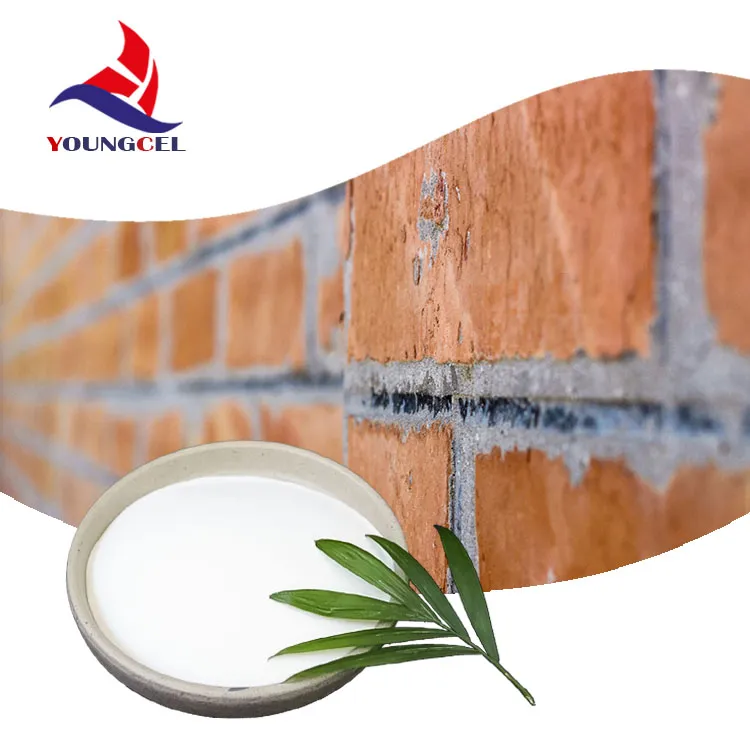The Role of Cellulose in Paints A Comprehensive Overview
In the world of coatings and paints, the quest for durability, sustainability, and performance has led to the exploration of a variety of ingredients. Among these, cellulose stands out as a significant component. Derived from plant materials, cellulose is a natural polymer that has gained recognition for its multifunctional properties, making it an ideal additive in the formulation of paints and coatings.
What is Cellulose?
Cellulose is a complex carbohydrate composed of linear chains of glucose units linked by β-1,4-glycosidic bonds. As the most abundant organic polymer on Earth, cellulose provides structural support to plant tissues, and its biodegradability makes it an environmentally friendly material. In the context of paints, cellulose can be sourced from various materials, including wood pulp, cotton, and even certain agricultural byproducts.
Benefits of Cellulose in Paints
1. Thickening Agent One of the primary uses of cellulose in paint formulations is as a thickening agent. It enhances the viscosity of the paint, allowing for better application control. This thickening property helps prevent settling of pigments, ensuring a homogeneous mixture that can be easily applied to various surfaces.
2. Film-Forming Ability Cellulose derivatives, such as hydroxypropyl cellulose (HPC) and carboxymethyl cellulose (CMC), exhibit excellent film-forming capabilities. When paints dry, cellulose helps create a robust and flexible film that contributes to the durability of the coating. This film not only enhances adhesion to surfaces but also provides resistance against environmental factors such as moisture and UV radiation.
3. Water Retention Cellulose possesses remarkable water retention properties. This characteristic is particularly beneficial during the application and drying phases of paint. It allows for extended working times, ensuring that painters have sufficient time to manipulate the paint without it drying too quickly. Additionally, better water retention leads to a smoother finish as the paint dries more consistently.
cellulose for paints

4. Reducing VOC Emissions Volatile organic compounds (VOCs) have been a significant concern in the paint industry due to their adverse environmental and health effects. The incorporation of cellulose in paint formulations can help reduce the overall VOC content. Cellulose can aid in formulating water-based paints, which typically emit fewer VOCs compared to solvent-based alternatives.
5. Sustainability As the world shifts towards more sustainable practices, cellulose presents an eco-friendly alternative in the paint industry. Sourcing cellulose from renewable materials aligns with the growing demand for sustainable products. Additionally, cellulose is biodegradable, thus reducing the environmental impact of paint waste.
Applications of Cellulose in Paint Formulations
Cellulose finds its utility in various types of paints, including architectural paints, industrial coatings, and specialty finishes. In architectural paints, cellulose helps achieve a smooth, professional appearance while providing durability and resistance to wear. For industrial coatings, it enhances the performance characteristics such as chemical resistance and ease of application.
Furthermore, cellulose can be utilized in specialty coatings for specific applications, such as anti-fog coatings for automotive glass or moisture-resistant paints for bathrooms and kitchens. The versatility of cellulose allows formulators to tailor products to meet diverse performance requirements.
Conclusion
Cellulose has emerged as a pivotal ingredient in the formulation of modern paints, offering a plethora of benefits that align with industry trends towards sustainability, safety, and performance. As consumers become more environmentally conscious, the demand for non-toxic and biodegradable ingredients continues to rise. Cellulose, with its multifaceted roles ranging from thickening agent to film-former, is likely to remain a mainstay in the paint industry for years to come. Its natural origin, coupled with its performance-enhancing properties, makes cellulose an invaluable asset in the search for innovative and eco-friendly paint solutions. By embracing cellulose, the paint industry can contribute to a greener future while still meeting the aesthetic and functional needs of consumers.
-
Rdp Powder: Key Considerations for Wholesalers in the Building Materials IndustryNewsJul.08,2025
-
Key Considerations for Wholesalers: Navigating the World of Hpmc - Based ProductsNewsJul.08,2025
-
Hpmc Detergent: Key Considerations for WholesalersNewsJul.08,2025
-
Key Considerations for Wholesalers: China Hpmc For Tile Adhesive, Coating Additives, Concrete Additives, and MoreNewsJul.08,2025
-
Crucial Considerations for Wholesalers: Navigating the World of Construction MaterialsNewsJul.08,2025
-
Key Considerations for Wholesalers Sourcing Additive For Cement, Additive For Concrete, Additive For Putty from Additive Manufacturer Shijiazhuang Gaocheng District Yongfeng Cellulose Co., Ltd.NewsJul.08,2025




